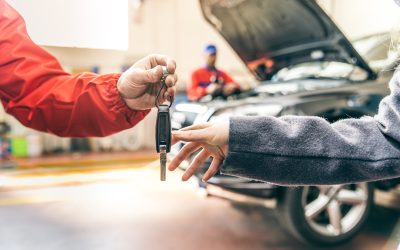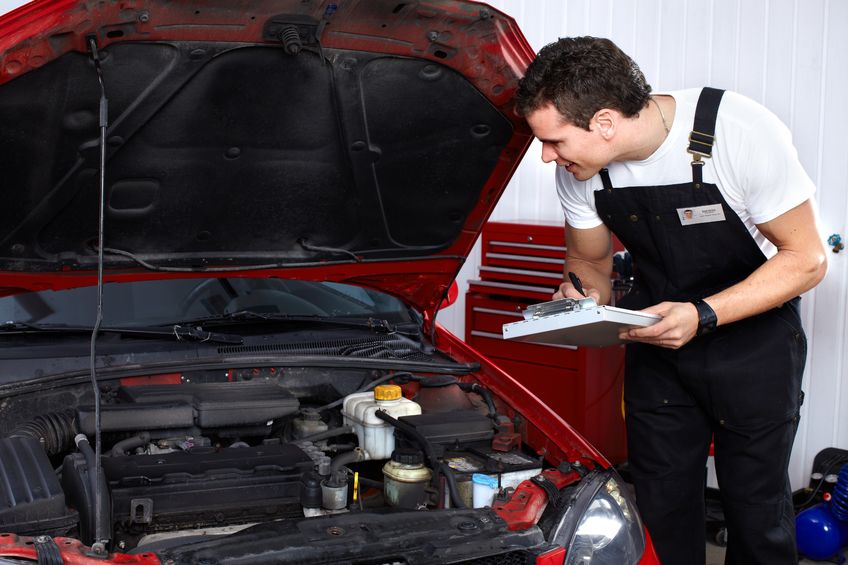Few sounds are as attention-grabbing—and frustrating—as squeaky brakes. Whether it’s a faint chirp or a loud screech, that high-pitched noise can leave drivers wondering: Is this a harmless annoyance or a warning of a more serious issue?
If you’ve found yourself searching for brake repair near me, it’s important to understand the difference between normal brake noise and symptoms that require immediate brake service.
What Causes Squeaky Brakes?
Brakes can make noise for several reasons—some are benign, while others can indicate trouble. Here are the most common causes:
1. Moisture and Dust
A layer of moisture or fine desert dust on the brake rotors can create temporary squeaking when you first start driving. This noise often disappears after a few uses of the brakes.
2. Worn Brake Pads
Brake pads are designed with wear indicators that produce a high-pitched squeal when they reach the end of their lifespan. This is one of the most common—and useful—warning signs that it’s time for brake service.
3. Glazed Pads or Rotors
Overheating from excessive braking, such as while descending a mountain, can cause brake pads and rotors to glaze. This results in a shiny surface that reduces braking effectiveness and often causes persistent squealing.
4. Lack of Lubrication
Brake hardware, such as caliper pins and backing plates, needs proper lubrication. Without it, the components can shift and vibrate, producing an annoying squeak or clunking sound.
5. Improper Installation or Low-Quality Parts
Poorly installed or low-grade pads may not fit properly, leading to vibration and noise. Using quality parts and working with experienced technicians helps reduce these issues.
Arizona’s Climate and Your Brakes
Arizona’s hot, dry climate combined with dusty roads can increase brake wear. Here’s how:
-
Dust and debris can accumulate on pads and rotors, accelerating wear and reducing stopping power.
-
High temperatures increase the risk of brake fade, particularly during extended downhill driving or stop-and-go traffic.
-
Desert terrain may require more frequent braking, especially in urban areas or while towing.
For these reasons, drivers in Arizona should pay close attention to early warning signs and consider more frequent brake inspections than those in milder climates.
When Is It Time for Brake and Rotor Replacement?
Knowing when to replace your brake components can prevent damage to other parts of your braking system. Look for these signs:
-
Grinding noises: This usually means the brake pad material is completely worn away, and metal is contacting metal.
-
Vibrating pedal: A pulsating brake pedal often points to warped rotors.
-
Visible scoring or grooves on rotors: Deep lines or uneven wear typically require rotor resurfacing or replacement.
-
Brake warning light: Many modern vehicles have sensors that trigger a dashboard light when brake components need attention.
In these cases, timely brake and rotor replacement is not just recommended—it’s essential for safe driving.
What to Expect During a Professional Brake Service
A comprehensive brake service includes more than just swapping out pads. A full inspection covers:
-
Pad and rotor condition
-
Brake fluid level and quality
-
Caliper function
-
Hardware and lubricants
-
Brake line integrity
-
Test drive to confirm performance
Having your brakes inspected by a certified technician helps ensure accurate diagnostics and long-lasting results. This kind of professional assessment is especially helpful in Arizona, where environmental factors can influence how often your brakes need attention.
If you’re looking for reliable service, working with a trusted automotive repair shop can ensure your braking system is properly maintained and fitted with quality components suited for the desert climate.
Can Squeaky Brakes Be a Simple Fix?
Yes—sometimes squeaky brakes are more of an inconvenience than an emergency. For example:
-
Morning dew or humidity can cause temporary squeaks.
-
Brake dust buildup may be resolved with a thorough cleaning.
-
Low-speed squealing might indicate surface rust that disappears with use.
However, if the squeaking is consistent, getting louder, or accompanied by any performance changes (like soft or unresponsive braking), it’s time for a full brake evaluation.
Final Thoughts: Take Brake Noises Seriously
Your braking system is one of the most important safety features in your vehicle. While some brake noises may seem minor, others can signal wear that impacts your ability to stop safely—especially on hot Arizona roads.
Whether you need new pads, resurfaced rotors, or a complete system inspection, staying ahead of brake issues ensures better performance and greater peace of mind behind the wheel.
If you’re hearing persistent squeaks and searching for brake repair near me, prioritize scheduling a professional brake service. It could be the difference between a simple maintenance visit and a more costly repair later on.
Looking for experienced technicians who understand desert driving conditions? A trusted automotive repair shop can help diagnose the issue and get your vehicle back to safe, quiet stops.



